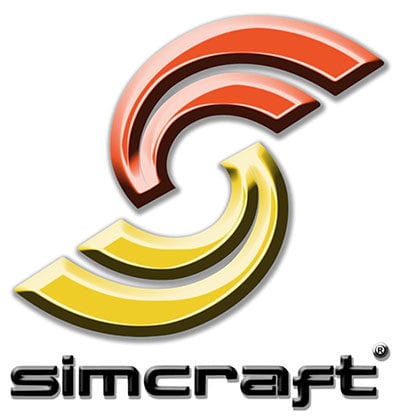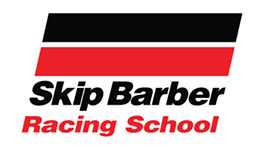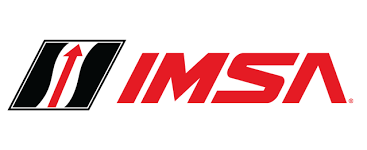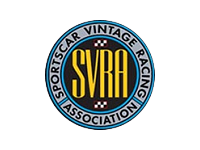Motion Simulator SDK, Craftware API from SimCraft
As a leader in motion simulation development since the late 90s, SimCraft has continually developed its software interfacing support to include over 85 different simulations and games. In addition to releasing the first motion SDK of its kind in 2009, SimCraft motion technology has evolved to provide support for developers in Unity and the Unreal Engine. The Craftware API is provided in C++ or wrapped for C#.
Class Craftware
- class Craftware
This class is the base class for the Craftware API. The constructor and destructor methods for Craftware cannot be called directly and are used internally within the Craftware library only. To utilize this API, any one of the methods designated with the CRAFTWARE_API prefix can be used. Craftware::initialize must be called to start the interface. After a successful init, one of the methods to provide physics through the interface (for craft orientation and acceleration) must be used. Craftware::shutdown() must be called to cleanup the interface. All vectors are based on left-hand coordinates, with Z-up.
| Field Summary | |
struct Craftware_Vars |
double rollAmplitude; int rollIntensity; |
| Constructor Summary | |
protected | Craftware() |
protected | virtual ~Craftware() |
| Method Summary | |
CRAFTWARE_API bool | accelerationsAndAngles6DOF( float orientationRoll, float orientationPitch, float orientationYaw, float accelerationRoll, float accelerationPitch, float accelerationYaw, float accelerationSurge, float accelerationSway, float accelerationHeave, bool bTransformAccelerationVals = true, bool bInDegrees = true ) |
CRAFTWARE_API bool | accelerationsAndAngles( float orientationRoll, float orientationPitch, float orientationYaw, float accelerationRoll, float accelerationPitch, float accelerationYaw, bool bAccelerationsAreLinear = true, bool bTransformAccelerationVals = true, bool bInDegrees = true ) |
CRAFTWARE_API bool | (DEPRACATED / LEGACY) angularAccelerationAndOrientation( float orientation[3], float acceleration[3], float fRadius[3], bool bInDegrees = true ) |
CRAFTWARE_API bool | (DEPRACATED / LEGACY) angularVelocityAndOrientation( float orientation[3], float angular_velocity[3], float fRadius[3], bool bInDegrees = true ) |
CRAFTWARE_API bool | calibratePlatform( bool homeSystem = false, bool bWarnOfMotion = true ) |
CRAFTWARE_API bool | convertLinearAccelToAngularAccel( float* inLinearX, float* inLinearY, float* inLinearZ, float* outAngularX, float* outAngularY, float* outAngularZ ) |
CRAFTWARE_API bool | errorCorrection(UINT axis, bool bResetAnyway = true, int returnVal = -1) |
CRAFTWARE_API bool | getAxisStatus(UINT axis) |
CRAFTWARE_API int | getAxisPosition(UINT axis) |
CRAFTWARE_API char* | getCraftwareVersion() |
CRAFTWARE_API int | getMaxPosForAxis( UINT axis ) |
CRAFTWARE_API bool | getSettingsUpdates() |
CRAFTWARE_API Craftware_Vars | getVars() |
CRAFTWARE_API bool | goHome( bool lockPlatform, bool warnOfMotion = true, bool shuttingDown = false) |
CRAFTWARE_API bool | homeAxis(UINT axis, bool init = true) |
CRAFTWARE_API bool | initialize( char* gameModule, bool initControlSystem = true, bool bWarnOfMotion, bool bInitMotion = true, bool bInitAccelAndSpeed = true) |
CRAFTWARE_API bool | initSpeedAndAccelerationOfActuators() |
CRAFTWARE_API bool | isShutdownInProgress() |
CRAFTWARE_API bool | isSystemInitialized() |
CRAFTWARE_API bool | (DEPRACATED / LEGACY) linearAccelerationAndOrientation( float orientation[3], float acceleration[3], bool bTransformAccelerationVals = true, bool bInDegrees = true ) |
CRAFTWARE_API bool | (DEPRACATED / LEGACY) linearAndAngularAccelerationsAndOrientation( float orientation[3], float linear_accel[3], float angular_accel[3], bool bTransformAccelerationVals = true, bool bInDegrees = true ) |
CRAFTWARE_API void | log( char* logStr, bool overRideOnError = false, bool writeToStdOut = false, bool messageBox = false, UINT iconForMessageBox =-1 ) |
CRAFTWARE_API void | moveAxis(UINT axis, int position, int speed = 15000) |
CRAFTWARE_API bool | (DEPRACATED / LEGACY) orientationOnly( float orientation[3], bool bInDegrees = true ) |
CRAFTWARE_API bool | (DEPRACATED / LEGACY) orientationAndGs( float orientation[3], float gs, bool bInDegrees = true ) |
CRAFTWARE_API bool | (DEPRACATED / LEGACY) orientationsAndAccelerations( float oriRoll, float oriPitch, float oriYaw, float accRoll, float accPitch, float accYaw, bool bTransformAccelerationVals, bool bInDegrees = true ) |
CRAFTWARE_API void | saveHomePos(UINT axis, int position) |
CRAFTWARE_API bool | setVars(Craftware_Vars) |
CRAFTWARE_API bool | shutdown(bool bGoHome = true) |
CRAFTWARE_API void | toggleAccelEvent( double rollAmplifier = 1, double pitchAmplifier = 1, double yawAmplifier = 1, double surgeAmplifier = 1, double swayAmplifier = 1, double heaveAmplifier = 1 ) |
CRAFTWARE_API void | toggleLogging( bool enableDisable ) |
| Field Detail |
Craftware_Vars
struct Craftware_Vars();
struct Craftware_Vars
- {
double rollAmplitude; //defines the motion amplitude for the ROLL axis ( Range of values: 1 -> 100 Default value: 85 )
double pitchAmplitude; //defines the motion amplitude for the PITCH axis ( Range of values: 1 -> 100 Default value: 85 )
double yawAmplitude; //defines the motion amplitude for the YAW axis ( Range of values: 1 -> 100 Default value: 85 )
double surgeAmplitude; //defines the motion amplitude for the SURGE axis ( Range of values: 1 -> 100 Default value: 85 )
double swayAmplitude; //defines the motion amplitude for the SWAY axis ( Range of values: 1 -> 100 Default value: 85 )
double heaveAmplitude; //defines the motion amplitude for the HEAVE axis ( Range of values: 1 -> 100 Default value: 85 )
int rollIntensity; //defines the motion intensity for the ROLL axis ( Range of values: 1 -> 1000 Default value: 30 )
int pitchIntensity; //defines the motion intensity for the PITCH axis ( Range of values: 1 -> 1000 Default value: 30 )
int yawIntensity; //defines the motion intensity for the YAW axis ( Range of values: 1 -> 1000 Default value: 30 )
int surgeIntensity; //defines the motion intensity for the SURGE axis ( Range of values: 1 -> 1000 Default value: 30 )
int swayIntensity; //defines the motion intensity for the SWAY axis ( Range of values: 1 -> 1000 Default value: 30 )
int heaveIntensity; //defines the motion intensity for the HEAVE axis ( Range of values: 950 -> 1000 Default value: 975 )
- };
| Constructor Detail |
Craftware
protected Craftware();
This constructor cannot be called directly. It is used internally only.
~Craftware
protected virtual ~Craftware();
This destructor cannot be called directly. It is used internally only.
| Method Detail |
bool bAccelerationsAreLinear = true, bool bTransformAccelerationVals = true, bool bInDegrees = true )
accelerationsAndAngles6DOF
public CRAFTWARE_API bool accelerationsAndAngles6DOF(
float orientationRoll,
float orientationPitch,
float orientationYaw,
float accelerationRoll,
float accelerationPitch,
float accelerationYaw,
float accelerationSurge,
float accelerationSway,
float accelerationHeave,
bool bTransformAccelerationVals = true,
bool bInDegrees = true );
This method is used to provide values for 6dof motion simualtion and should be called repeatedly at the same frequency as the FPS. (or as close as possible) This method allows for the providing of the orientation and rotational and/or linear acceleration values. All vals are based on left-hand coordinates, with Z-up.
Params
orientationRoll
- (float):
- roll value for orientation; can be provided in radians or degrees. Range of values = +/- 180° or +/- 3.14 rad. +X results in ROLL right
orientationPitch
- (float):
- pitch value for orientation; can be provided in radians or degrees. Range of values = +/- 180° or +/- 3.14 rad. +Y results in PITCH up
orientationYaw
- (float):
- yaw value for orientation; can be provided in radians or degrees. Range of values = +/- 180° or +/- 3.14 rad. +Z results in YAW left
accelerationRoll
- (float):
- roll value for acceleration; must be provided in Body Coordinates. For rotational accel, values must be given in either radians per second^2 or degrees per second^2. If provided in radians,
bInDegrees
- must be set to false so the appropriate conversion from radians to degrees can be performed. X represents ROLL (left/right) accel. Linear acceleration values must be given in m/s^2.
accelerationPitch
- (float):
- pitch value for acceleration; must be provided in Body Coordinates. For rotational accel, values must be given in either radians per second^2 or degrees per second^2. If provided in radians,
bInDegrees
- must be set to false so the appropriate conversion from radians to degrees can be performed. Y represents PITCH accel (forward/backward). Linear acceleration values must be given in m/s^2.
accelerationYaw
- (float):
- yaw value for acceleration; must be provided in Body Coordinates. Values must be given in either radians per second^2 or degrees per second^2. If provided in radians,
bInDegrees
- must be set to false so the appropriate conversion from radians to degrees can be performed. Z represents YAW accel (twist).
accelerationSurge
- (float):
- surge value for acceleration; must be provided in Body Coordinates. Values must be given in m/s^2.
accelerationSway
- (float):
- sway value for acceleration; must be provided in Body Coordinates. Values must be given in m/s^2.
accelerationHeave
- (float):
- heave value for acceleration; must be provided in Body Coordinates. Values must be given in m/s^2.
bTransformAccelerationVals
- (boolean) :
- If specified as true, the provided values for
acceleration
- will be assumed to be provided in World Coordinates and will be transformed to the craft Body Coordinates. If false, no transformation is necessary. (default is true)
bInDegrees
- (boolean) :
- Specifies if the values for
orientation
- and
acceleration
- are provided in degrees (true) or radians (false). (default is true)
Return Value
- (boolean)
- True if the command was received and applied without error. A return value of false indicates that an error occurred in the motion control system.
accelerationsAndAngles
public CRAFTWARE_API bool accelerationsAndAngles(
float orientationRoll,
float orientationPitch,
float orientationYaw,
float accelerationRoll,
float accelerationPitch,
float accelerationYaw,
bool bAccelerationsAreLinear = true,
bool bTransformAccelerationVals = true,
bool bInDegrees = true );
This method is used to provide vectors and should be called repeatedly at the same frequency as the FPS. (or as close as possible) This method allows for the providing of the orientation and angular acceleration vectors. All vectors are based on left-hand coordinates, with Z-up.
Params
orientationRoll
- (float):
- roll value for orientation; can be provided in radians or degrees. Range of values = +/- 180° or +/- 3.14 rad. +X results in ROLL right
orientationPitch
- (float):
- pitch value for orientation; can be provided in radians or degrees. Range of values = +/- 180° or +/- 3.14 rad. +Y results in PITCH up
orientationYaw
- (float):
- yaw value for orientation; can be provided in radians or degrees. Range of values = +/- 180° or +/- 3.14 rad. +Z results in YAW left
accelerationRoll
- (float):
- roll value for acceleration; must be provided in Body Coordinates. Values must be given in either radians per second^2 or degrees per second^2. If provided in radians,
bInDegrees
- must be set to false so the appropriate conversion from radians to degrees can be performed. X represents ROLL (left/right) accel
accelerationPitch
- (float):
- pitch value for acceleration; must be provided in Body Coordinates. Values must be given in either radians per second^2 or degrees per second^2. If provided in radians,
bInDegrees
- must be set to false so the appropriate conversion from radians to degrees can be performed. Y represents PITCH accel (forward/backward)
accelerationYaw
- (float):
- yaw value for acceleration; must be provided in Body Coordinates. Values must be given in either radians per second^2 or degrees per second^2. If provided in radians,
bInDegrees
- must be set to false so the appropriate conversion from radians to degrees can be performed. Z represents YAW accel (twist)
bAccelerationsAreLinear
- (boolean) :
- If specified as true, the provided values for
acceleration
- will be assumed to be provided as linear acceleration, false as rotational accelerations. (default is true)
bTransformAccelerationVals
- (boolean) :
- If specified as true, the provided values for
acceleration
- will be assumed to be provided in World Coordinates and will be transformed to the craft Body Coordinates. If false, no transformation is necessary. (default is true)
bInDegrees
- (boolean) :
- Specifies if the values for
orientation
- and
acceleration
- are provided in degrees (true) or radians (false). (default is true)
Return Value
- (boolean)
- True if the command was received and applied without error. A return value of false indicates that an error occurred in the motion control system.
angularAccelerationAndOrientation (DEPRACATED / LEGACY)
public CRAFTWARE_API bool angularAccelerationAndOrientation( float orientation[3], float acceleration[3], float fRadius[3], bool bInDegrees = true );
This method is used to provide vectors and should be called repeatedly at the same frequency as the FPS. (or as close as possible) This method allows for the providing of the orientation and angular acceleration vectors. All vectors are based on left-hand coordinates, with Z-up.
Params
orientation[3]
- (float):
- X, Y, Z values for orientation; X = ROLL, Y = PITCH, Z = YAW; can be provided in radians or degrees. Range of values = +/- 180° or +/- 3.14 rad. +X results in ROLL right, +Y results in PITCH up, +Z results in YAW left.
acceleration[3]
- (float):
- X, Y, Z values for angular acceleration; X = ROLL, Y = PITCH, Z = YAW; must be provided in Body Coordinates. Values must be given in either radians per second^2 or degrees per second^2. If provided in radians,
bInDegrees
- must be set to false so the appropriate conversion from radians to degrees can be performed. X represents ROLL (left/right) accel, Y represents PITCH accel (forward/backward), and Z represents YAW accel (twist).
fRadius[3]
- (float):
- Radius values for the X, Y, Z angular acceleration values. The radius for each axis will be used to convert the values provided in
acceleration[3]
- from angular acceleration to linear acceleration.
bInDegrees
- (boolean) :
- Specifies if the values of
orientation[3]
- and
acceleration[3]
- are provided in degrees (true) or radians (false). (default is true)
Return Value
- (boolean)
- True if the command was received and applied without error. A return value of false indicates that an error occurred in the motion control system.
angularVelocityAndOrientation (DEPRACATED / LEGACY)
public CRAFTWARE_API bool angularVelocityAndOrientation( float orientation[3], float angular_velocity[3], bool bInDegrees = true );
This method is used to provide vectors and should be called repeatedly at the same frequency as the FPS. (or as close as possible) This method allows for the providing of the orientation and angular velocity vectors. All vectors are based on left-hand coordinates, with Z-up.
Params
orientation[3]
- (float):
- X, Y, Z values for orientation; X = ROLL, Y = PITCH, Z = YAW; can be provided in radians or degrees. Range of values = +/- 180° or +/- 3.14 rad. +X results in ROLL right, +Y results in PITCH up, +Z results in YAW left.
angular_velocity[3]
- (float):
- X, Y, Z values for angular velocity; X = ROLL, Y = PITCH, Z = YAW; must be provided in Body Coordinates. Values must be given in either radians per second or degrees per second. If provided in radians,
bInDegrees
- must be set to false so the appropriate conversion from radians to degrees can be performed. X represents ROLL (left/right), Y represents PITCH (forward/backward), and Z represents YAW (twist).
bInDegrees
- (boolean) :
- Specifies if the values of
orientation[3]
- are provided in degrees (true) or radians (false). (default is true)
Return Value
- (boolean)
- True if the command was received and applied without error. A return value of false indicates that an error occurred in the motion control system.
calibratePlatform
public CRAFTWARE_API bool calibratePlatform( bool bHomeSystem = false );
Performs a calibration of the motion system. Upon true, the system is in the home position and unlocked. This method is called at initialization, and does not need to be called specifically. Can be used for error correction or outside initialization resets.
Params
bHomeSystem
- (boolean):
- Specifies if each of the actuators will be homed prior to calibration. Homing of the actuators is generally only required for attempts to correct error corrections. (default is false)
Return Value
- (boolean)
- True is returned if the motion simulator was calibrated successfully. A return value of false indicates that either calibration or homing, if specified, failed. Failures could be caused by an unresponsive control system or an error condition within the actuators. A message box will be displayed if any error occurs.
convertLinearAccelToAngularAccel
public CRAFTWARE_API bool convertLinearAccelToAngularAccel( float* inLinearX, float* inLinearY, float* inLinearZ, float* outAngularX, float* outAngularY, float* outAngularZ );
Performs a conversion of linear acceleration to angular acceleration.
In Params
inLinearX
- (float*):
- Linear acceleration X (sway) value as input.
inLinearY
- (float*):
- Linear acceleration Y (surge) value as input.
inLinearZ
- (float*):
- Linear acceleration Z (heave) value as input.
Out Params
outLinearX
- (float*):
- Angular acceleration X (Roll) value as output.
outLinearY
- (float*):
- Angular acceleration Y (Pitch) value as output.
outLinearX
- (float*):
- Angular acceleration Z (Yaw) value as output.
Return Value
- (void)
errorCorrection
public CRAFTWARE_API bool errorCorrection(UINT axis, bool bResetAnyway);
Will attempt to clear each of the installed actuators of any error conditions that have occurred.
Params
axis
- (UINT):
- Specifies the axis or degree of freedom to perform the errorCorrection routine
bResetAnyway = true
- (bool):
- Boolean to tell the errorCorrection routine to reset the axis regardless of error state, default to true if not specified.
Return Value
- (boolean)
- True is returned when the installed actuators were responsive and all error conditions have been cleared. If false is returned, a message box will be displayed indicated a failure to clear the error condition and SimCraft Support will need to be contacted by the motion simulator user to get the condition corrected.
moveAxis
public CRAFTWARE_API void moveAxis(UINT axis, int position, int speed = 15000);
Will move the specified axis to the specified position at the specified speed.
Params
axis
- (UINT):
- Specifies the axis or degree of freedom to perform the moveAxis routine
position
- (int):
- Position to move the axis actuator to. Assumes an absolute position within the range of available positions
speed
- (int):
- The speed to perform the move, default is 15000 positions per second
Return Value
- (void)
- NONE
getAxisStatus
public CRAFTWARE_API bool getAxisStatus ( UINT axis );
Determines the status for the supplied axis.
Params
- (void)
axis
- UINT:
- Specifies the axis to obtain status information.
Return Value
- bool
- The returned boolean provides a true value for “ready” state and false for “error” state of the supplied axis.
getAxisPosition
public CRAFTWARE_API int getAxisPosition ( UINT axis );
Determines the position for the supplied axis.
Params
- (void)
axis
- UINT:
- Specifies the axis to obtain position information.
Return Value
- int
- The returned integer is the current position of the supplied axis.
getCraftwareVersion
public CRAFTWARE_API char* getCraftwareVersion();
Determines the current running version of Craftware
Params
- (void)
- NONE
Return Value
- (char*)
- The returned character pointer provides the location of the character array that contains the Craftware version.
getMaxPosForAxis
public CRAFTWARE_API int getMaxPosForAxis ( UINT axis );
Determines and returns the maximum position for the supplied axis.
Params
- (void)
axis
- UINT:
- Specifies the axis to obtain max position information.
Return Value
- int
- The returned integer is the maximum position of the supplied axis.
getSettingsUpdates
public CRAFTWARE_API bool getSettingsUpdates();
Will refresh the settings in Craftware from the XML based setting file (simSettings.xml).
Params
- (void)
- NONE
Return Value
- (boolean)
- True is returned if the xml file was successfully queried for settings updates. False is returned if the file could not be queried, and is generally caused by insufficient system level permissions.
getVars
public CRAFTWARE_API Craftware_Vars getVars();
Will provide the Craftware_Vars structure which contains motion variables of amplitude and intensity for the PITCH, ROLL, and YAW axes. The values returned are specific to the game module id, which is specified as the first paramater of the initialize() method.
Params
- (void)
- NONE
Return Value
- (Craftware_Vars)
- Returns a copy of the
- struct.
goHome
public CRAFTWARE_API bool goHome( bool bLockPlatform, bool bWarnOfMotion = true, bool shuttingDown = false );
Returns the motion platform to its default position. [Roll (X) = 0, Pitch (Y) = 0, Yaw (Z) = 0]
Params
bLockPlatform
- (boolean):
- This variable will invoke the automatic locking mechanism in each of the axes of the motion platform. Craftware will automatically check the lock status and unlock the platform before any motion is invoked. There may be times when you want to “goHome” and not lock the platform immediately following the call. In this case, set this variable to false.
bWarnOfMotion = true
- (boolean):
- If true, the user will receive a message box prompt warning of impending motion of the platform. The user will be given an option to proceed (OK) or to cancel (CANCEL). (default is true)
shuttingdown = false
- (boolean):
- If true, the routine performs additional shutdown steps associated with a full shutdown of the motion system. (default is false)
Return Value
- (boolean)
- If the user is prompted and warned of motion (if
bWarnOfMotion
- is true) and the user cancels the action by selecting “Cancel” in the prompt messagebox, a value of false will be returned. False will also be returned if the home position could not be achieved or if the locking mechanism (
bLockPlatform
- is true) failed to locked the system upon achieving home.
homeAxis
public CRAFTWARE_API bool homeAxis(UINT axis, bool init = true);
Performs homing operation on specified axis.
Params
axis
- (UINT):
- This variable specifies the axis to perform the homing operation (0 – ROLL, 1 – PITCH, 2 – YAW, 3 – SURGE, 4 – SWAY, 5 – HEAVE)
init = true
- (boolean):
- If true, the user will receive a message box prompt warning of impending motion of the platform. The user will be given an option to proceed (OK) or to cancel (CANCEL). (default is true)
Return Value
- (boolean)
- If the user is prompted and warned of motion (if
bWarnOfMotion
- is true) and the user cancels the action by selecting “Cancel” in the prompt messagebox, a value of false will be returned. False will also be returned if the home position could not be achieved or if the locking mechanism (
bLockPlatform
- is true) failed to locked the system upon achieving home.
initialize
public CRAFTWARE_API bool initialize( char* gameModule, bool bInitControlSystem = true, bool bWarnOfMotion, bool bInitMotion = true, bool bInitAccelAndSpeed = true );
This is a required method to initialize the Craftware API. This method will initialize the internal Craftware variables based on the supplied (unique) gameModule parameter. The gameModule parameter will be used to lookup Craftware variables specific to the gameModule in the simSetting.xml file, located in the SimCraft installation folder.
Params
gameModule
- (char*):
- Specifies the unique id for the game given in the format scGMX where X is the unique game ID (integer) provided by SimCraft. If you need to obtain a unique game ID, please contact SimCraft Support. ([email protected] or 1.877.SimCraft)
bInitControlSystem
- (boolean):
- If true, the motion control system will be initialized. In test and implementation cases where a SimCraft motion device is not present, this value should be false. (default is true)
bWarnOfMotion
- (boolean):
- If true, the motion control system will not be initialized until user accepts a safety warning message box. SimCraft CraftCon will warn user explicitly so it skips the step. Any title embedding Craftware should definately do this and leave true. (default is true)
bInitMotion
- (boolean):
- If true, the motion control system will also perform initial homing of actuators if this is the first init attempt since a power cycle of the motion system. (default is true)
bInitAccelAndSpeed
- (boolean):
- If true, the motion control system will actively set the speed and acceleration of the motion control system during the init sequence (default is true)
Return Value
- (boolean)
- If true, the initialization process of the motion control system was successful. If false, the user will be provided a message box indicating the error. For implementation and testing without the presence of a SimCraft motion platform, this method will return false which indicates that the device was not found, but all methods including those intended to provide data to the motion control system can still be called. After a successful initialization, the logging of messages and values will occur to a logs directory contained within the SimCraft control panel installation. If this control panel system is not present on a test or implementation system, logging will still occur but instead to the file “C:\craftwareTestOut.txt”.
initSpeedAndAccelerationOfActuators
public CRAFTWARE_API bool initSpeedAndAccelerationOfActuators();
Initializes the speed and accel vals for all actuators associated with an enabled axis
Params
- (void)
- NONE
Return Value
- (boolean)
- True if successful, False if not.
isShutdownInProgress
public CRAFTWARE_API bool isShutdownInProgress();
Checks Craftware to see if a shutdown sequence has been invoked and is in process.
Params
- (void)
- NONE
Return Value
- (boolean)
- True if a Craftware shutdown sequence is in process, False if not.
isSystemInitialized
public CRAFTWARE_API bool isSystemInitialized();
Checks to see if the motion control system has been initialized successfully.
Params
- (void)
- NONE
Return Value
- (boolean)
- True if the Craftware motion control system has been successfully initialized, False if not.
linearAccelerationAndOrientation
(DEPRACATED / LEGACY)
public CRAFTWARE_API bool linearAccelerationAndOrientation( float orientation[3], float acceleration[3], bool bTransformAccelerationVals = true, bool bInDegrees = true );
This method is used to provide vectors and should be called repeatedly at the same frequency as the FPS. (or as close as possible) This method allows for the providing of the orientation and linear acceleration vectors. All vectors are based on left-hand coordinates, with Z-up.
Params
orientation[3]
- (float):
- X, Y, Z values for orientation; X = ROLL, Y = PITCH, Z = YAW; can be provided in radians or degrees. Range of values = +/- 180° or +/- 3.14 rad. +X results in ROLL right, +Y results in PITCH up, +Z results in YAW left.
acceleration[3]
- (float):
- X, Y, Z values for linear acceleration; X = SWAY, Y = SURGE, Z = HEAVE; can be provided in either Body or World Coordinates. Values must be given in meters per second^2. If provided in World Coordinates,
bTransformAccelerationVals
- must be set to true so the appropriate transformation to Body Coordinates can be performed. X represents SWAY (left/right) accel, Y represents SURGE accel (forward/backward), and Z represents HEAVE accel (up/down).
bTransformAccelerationVals
- (boolean) :
- If specified as true, the provided vector as
acceleration[3]
- will be assumed to be provided in World Coordinates and will be transformed to the craft Body Coordinates. If false, no transformation is necessary.
bInDegrees
- (boolean) :
- Specifies if the values of
orientation[3]
- are provided in degrees (true) or radians (false). (default is true)
Return Value
- (boolean)
- True if the command was received and applied without error. A return value of false indicates that an error occurred in the motion control system,
linearAndAngularAccelerationsAndOrientation (DEPRACATED / LEGACY)
public CRAFTWARE_API bool linearAndAngularAccelerationsAndOrientation( float orientation[3], float linear_accel[3], float angular_accel[3], bool bTransformAccelerationVals = true, bool bInDegrees = true );
This method is used to provide vectors and should be called repeatedly at the same frequency as the FPS. (or as close as possible) This method allows for the providing of the orientation and both the linear and angular acceleration vectors. All vectors are based on left-hand coordinates, with Z-up.
Params
orientation[3]
- (float):
- X, Y, Z values for orientation; X = ROLL, Y = PITCH, Z = YAW; can be provided in radians or degrees. Range of values = +/- 180° or +/- 3.14 rad. +X results in ROLL right, +Y results in PITCH up, +Z results in YAW left.
linear_accel[3]
- (float):
- X, Y, Z values for linear acceleration; X = SWAY, Y = SURGE, Z = HEAVE; can be provided in either Body or World Coordinates. Values must be given in meters per second^2. If provided in World Coordinates,
bTransformAccelerationVals
- must be set to true so the appropriate transformation to Body Coordinates can be performed. X represents SWAY (left/right) accel, Y represents SURGE accel (forward/backward), and Z represents HEAVE accel (up/down).
angular_accel[3]
- (float):
- X, Y, Z values for angular (rotational) acceleration; X = ROLL, Y = PITCH, Z = YAW; must be provided in Body Coordinates only. Values must be given in degrees per second^2. X represents Roll (left/right) accel, Y represents Pitch accel (forward/backward), and Z represents Yaw accel.
bTransformAccelerationVals
- (boolean) :
- If specified as true, the provided linear accel vector as
linear_accel[3]
- will be assumed to be provided in World Coordinates and will be transformed to the craft Body Coordinates. If false, no transformation is necessary.
bInDegrees
- (boolean) :
- Specifies if the values of
orientation[3]
- are provided in degrees (true) or radians (false). (default is true)
Return Value
- (boolean)
- True if the command was received and applied without error. A return value of false indicates that an error occurred in the motion control system,
log
public CRAFTWARE_API void log( char* logStr, bool bOverRideOnError = false, bool bWriteToStdOut = false, bool bMessageBox = false, UINT iconForMessageBox =-1 );
This method allows for messages to be logged to the Craftware logging system and/or displayed to the user.
Params
logStr
- (char*):
- Character pointer
bOverRideOnError
- (boolean):
- Logging will only log to the file if the log settings “logging enable” is true. If logging enable is false, but an error occurs I can override the log settings by making sure the override error is true. (default is false)
bWriteToStdOut
- (boolean):
- Will write out
logStr
- , assuming logging is enabled, to standard output which is the console window. This value is automatically set as false. This value needs to be true for any messages that would like to be viewed in the game module window. Debugging, etc. (default is false)
bMessageBox
- (boolean):
- If true the log messages will be displayed in a message box. (default is false)
iconForMessageBox
- (UINT):
- Unassigned integer and assigns the icons to the message box. There area 3 values:
- a. INFO: information icon
- b. WARNING: warning exclamation icon
- c. ERR: will show you a red X icon. Error has occurred.
Return Value
- (void)
- NONE
orientationOnly (DEPRACATED / LEGACY)
public CRAFTWARE_API bool orientationOnly( float orientation[3], bool bInDegrees = true );
This method is used to provide vectors and should be called repeatedly at the same frequency as the FPS. (or as close as possible) This method allows for the providing of the orientation vector in local, body coordinates, (X, Y, Z values), for orientation only control of the motion simulator; X = ROLL, Y = PITCH, Z = YAW. Must be provided in craft body coordinates. All vectors are based on left-hand coordinates, with Z-up.
Params
orientation[3]
- (float):
- X, Y, Z values for orientation; X = ROLL, Y = PITCH, Z = YAW; can be provided in radians or degrees. Range of values = +/- 180° or +/- 3.14 rad. +X results in ROLL right, +Y results in PITCH up, +Z results in YAW left.
bInDegrees
- (boolean):
- Specifies if the values of
orientation[3]
- are provided in degrees (true) or radians (false). (default is true)
Return Value
- (boolean)
- True if the command was received and applied without error. A return value of false indicates that an error occurred in the motion control system,
orientationAndGs (DEPRACATED / LEGACY)
public CRAFTWARE_API bool orientationAndGs( float orientation[3], float gs, bool bInDegrees = true );
This method is used to provide vectors and should be called repeatedly at the same frequency as the FPS. (or as close as possible) This method allows for the providing of the orientation vector in local, body coordinates, (X, Y, Z values), for orientation only control of the motion simulator; X = ROLL, Y = PITCH, Z = YAW. Must be provided in craft body coordinates. An additional param for Gs is provided to allow for the specification of Gs experienced by the user. Typically, this value is used in aircraft simulation only. All vectors are based on left-hand coordinates, with Z-up.
Params
orientation[3]
- (float):
- X, Y, Z values for orientation; X = ROLL, Y = PITCH, Z = YAW; can be provided in radians or degrees. Range of values = +/- 180° or +/- 3.14 rad. +X results in ROLL right, +Y results in PITCH up, +Z results in YAW left.
gs
- (float):
- Value representing Gs
bInDegrees
- (boolean):
- Specifies if the values of
orientation[3]
- are provided in degrees (true) or radians (false). (default is true)
Return Value
- (boolean)
- True if the command was received and applied without error. A return value of false indicates that an error occurred in the motion control system,
orientationsAndAccelerations (DEPRACATED / LEGACY)
public CRAFTWARE_API bool orientationsAndAccelerations( float oriRoll, float oriPitch, float oriYaw, float accRoll, float accPitch, float accYaw, bool bTransformAccelerationVals, bool bInDegrees = true );
This method is used to provide raw float vals for orientation and accelerations and should be called repeatedly at the same frequency as the FPS. (or as close as possible) This method allows for the providing of the orientation in local, body coordinates, (X, Y, Z values).
Params
oriRoll
- (float):
- Roll orientation. Range of values = +/- 180° or +/- 3.14 rad. +X results in ROLL right, +Y results in PITCH up, +Z results in YAW left.
oriPitch
- (float):
- Pitch orientation. Range of values = +/- 180° or +/- 3.14 rad. +X results in ROLL right, +Y results in PITCH up, +Z results in YAW left.
oriYaw
- (float):
- Yaw orientation. Range of values = +/- 180° or +/- 3.14 rad. +X results in ROLL right, +Y results in PITCH up, +Z results in YAW left.
accRoll
- (float):
- Roll acceleration. Linear or Rotational. X = ROLL, Y = PITCH, Z = YAW; can be provided in either Body or World Coordinates. Values must be given in meters per second^2. If provided in World Coordinates,
bTransformAccelerationVals
- must be set to true so the appropriate transformation to Body Coordinates can be performed. X represents SWAY (left/right) accel, Y represents SURGE accel (forward/backward), and Z represents HEAVE accel (up/down).
accPitch
- (float):
- Pitch acceleration. Linear or Rotational. X = ROLL, Y = PITCH, Z = YAW; can be provided in either Body or World Coordinates. Values must be given in meters per second^2. If provided in World Coordinates,
bTransformAccelerationVals
- must be set to true so the appropriate transformation to Body Coordinates can be performed. X represents SWAY (left/right) accel, Y represents SURGE accel (forward/backward), and Z represents HEAVE accel (up/down).
accYaw
- (float):
- Yaw acceleration. Rotational X = ROLL, Y = PITCH, Z = YAW; can be provided in either Body or World Coordinates. Values must be given in meters per second^2. If provided in World Coordinates,
bTransformAccelerationVals
- must be set to true so the appropriate transformation to Body Coordinates can be performed. X represents SWAY (left/right) accel, Y represents SURGE accel (forward/backward), and Z represents HEAVE accel (up/down).
bTransformAccelerationVals
- (boolean) :
- If specified as true, the provided linear accel vals will be assumed to be provided in World Coordinates and will be transformed to the craft Body Coordinates. If false, no transformation is necessary.
bInDegrees
- (boolean) :
- Specifies if the values of
orientation[3]
- are provided in degrees (true) or radians (false). (default is true)
Return Value
- (boolean)
- True if the command was received and applied without error. A return value of false indicates that an error occurred in the motion control system,
setVars
public CRAFTWARE_API bool setVars(Craftware_Vars);
Will set the Craftware_Vars stuct which contains motion variables of amplitude and intensity for the PITCH, ROLL, and YAW axes. The values returned are specific to the game module id, which is specified as the first paramater of the initialize() method. All values are stored in the simSettings.xml file under a tag equal to where XX is the assigned module id.
Params
Craftware_Vars
- struct defined as
Return Value
- (boolean)
- Returns true if the setting of the Craftware_Vars struct was successful, false if otherwise.
shutdown
public CRAFTWARE_API bool shutdown();
Homes and locks the motion platform. Cleans up communication ports, close log files, and, assuming all return fine, returns true
Params
- (void)
- NONE
Return Value
- (boolean)
- True if shutdown occurred without error. False if a problem occurred. If an error does occur during shutdown, the user will see a messagebox indicating the problem.
toggleAccelEvent
public CRAFTWARE_API void toggleAccelEvent( double rollAmplifier = 1, double pitchAmplifier = 1, double yawAmplifier = 1, double surgeAmplifier = 1, double swayAmplifier = 1, double heaveAmplifier = 1 );
Toggles “collision” or short term acceleration events in the motion control system.
Params
rollAmplifier
- (double):
pitchAmplifier
- (double):
yawAmplifier
- (double):
surgeAmplifier
- (double):
swayAmplifier
- (double):
heaveAmplifier
- (double):
Return Value
- (void)
- NONE
toggleLogging
public CRAFTWARE_API void toggleLogging( bool enableDisable );
Toggles logging on and off.
Params
enableDisable
- (bool):
- If true, logging is enabled. If false, logging is disabled. After a successful initialization, the logging of messages and values will occur to a logs directory contained within the SimCraft control panel installation. If this control panel system is not present on a test or implementation system, logging will still occur but instead to the file “C:\craftwareTestOut.txt”.
Return Value
- (void)
- NONE




















